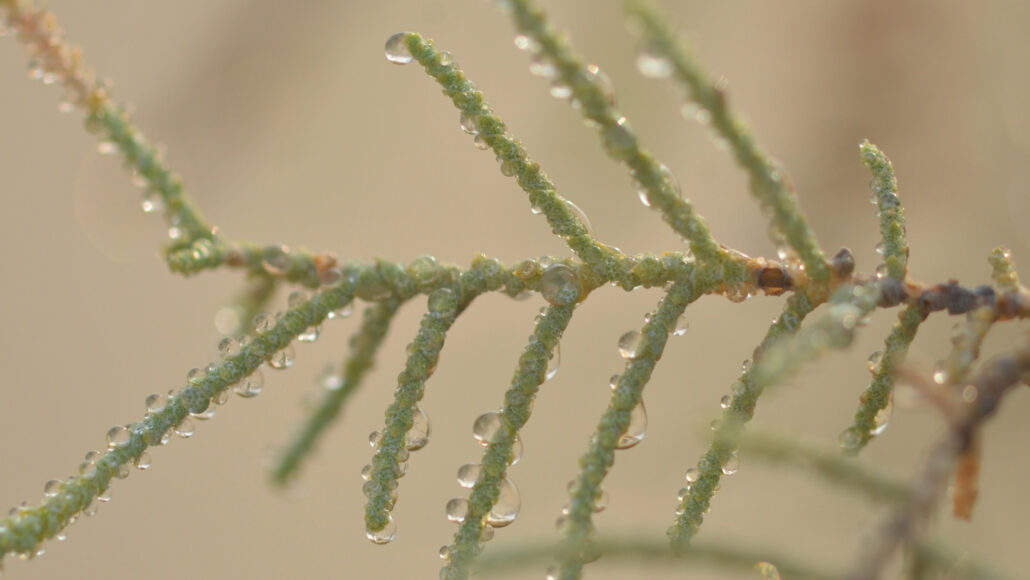Desert plant uses salt in sweat to maintain hydration

In the intense heat, some animals regulate their temperature through perspiration. Similarly, a certain desert shrub uses its salty secretions to draw water from the atmosphere.
Scientists have discovered that the Athel tamarisk, a desert shrub, uses a unique blend of salts secreted by its leaves to draw out water from the atmosphere. The discovery was reported in the Proceedings of the National Academy of Sciences on October 30, and it provides critical insights into the ingenious chemical methods developed by plants to survive in severe conditions.
The Athel tamarisk (Tamarix aphylla) flourishes in the dry, salt-rich soils of coastal flats in the Middle East. As a halophyte, it can tolerate this environment because it excretes concentrated salty droplets from glands in its leaves. These salty discharges evaporate in the daytime heat, leaving the plant covered in a layer of white crystals that are subsequently blown away by the wind.
Matrials scientist Marieh Al-Handawi of New York University Abu Dhabi, who was traversing the hot and humid deserts of the United Arab Emirates, observed water condensing on these crystals. Although many plants have leaf structures adapted to attract liquid water from fog, Al-Handawi believes that this phenomenon may have something to do with the chemical composition of the salts.
Al-Handawi and her team shot time-lapse footages of Athel tamarisk plants in their natural environment to further investigate. The time-lapse videos revealed that salt crystals formed from daytime secretions absorb water during the night. In the lab, at 35° Celsius and 80 percent relative humidity, a naturally encrusted branch gathered 15 milligrams of water on its leaves after two hours, while a cleaned branch only managed to collect about a tenth of that amount.
Al-Handawi sees this as conclusive proof that the salts play a major role in water harvesting, and that it's not dependent on the plant's surface. Besides, the team noticed dew forming on the crystals even at 50 percent relative humidity.
The team's analysis of the chemical composition of the tamarisk's salty droplets revealed over ten different types of salt crystallized together, primarily sodium chloride and gypsum, with traces of lithium sulfate. This mineral is especially good at absorbing water even at much lower humidity compared to sodium chloride or gypsum. This led the researchers to conclude that the presence of lithium sulfate explains the ability of the tamarisk to draw water even with low humidity levels.
Plant physiologist and ecologist at UCLA, Lawren Sack who was not part of the study, acknowledged that this paper brings a novel, detailed understanding of how certain desert plants excrete salt and utilize it to absorb water from the atmosphere into leaves. He appreciates the diverse chemistry of the salts and asserts that many more such systems are yet to be discovered.
Al-Handawi concurs, noting that the composition of the salt may vary based on the region and season. This gives her hope of discovering more water-harvesting materials in the desert.
This piece was supported by reader donations.




